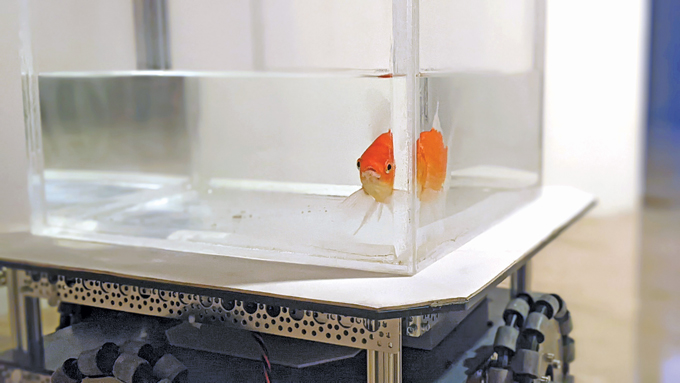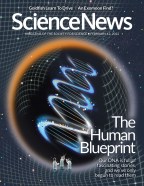Readers react to disinfectants made from sawdust, goldfish that drive and more
- More than 2 years ago
Leaving microbes in the dust
Antimicrobial molecules in wood waste could be used to make more sustainable disinfectants, Carolyn Wilke reported in “A disinfectant may get its oomph from sawdust” (SN: 2/12/22, p. 5).
Some readers wondered if the tree species or freshness of the wood waste affects the potency of the disinfectant.
In the study, the researchers used sawdust from birch wood. They did not look at the disinfecting effects of sawdust from different species of wood, Wilke says. But the team did examine disinfectants made from other forms of biomass, including bamboo powder, rice straw and corn straw.
Across the board, biomass with low levels of ash and high levels of lignocellulose, the matter that gives plants structure, may be preferable for killing microbes, says environmental engineer Shicheng Zhang of Fudan University in Shanghai. The freshness of the wood waste probably doesn’t have a huge influence on the effectiveness of the resulting disinfectant, Zhang says. Sawdust from freshly cut trees and sawdust from wood processed later, such as wood used for construction, both have high lignocellulose content and similar other components.
Ancient kunga line
The earliest known hybrid animal bred by humans is the kunga, which existed around 4,500 years ago in Syro-Mesopotamia, Jake Buehler reported in “Ancient equine was a human-made hybrid” (SN: 2/12/22, p. 5).
Reader Anne Barschall asked how researchers know that the kunga, a cross between a donkey and an Asiatic wild ass called a hemippe, was created by humans.
A couple of reasons point to the kunga being a human-made hybrid, says paleogeneticist Eva‑Maria Geigl of Institut Jacques Monod in Paris. First, cuneiform tablets refer to a kunga production center in northern Syria. Second, if mating in the wild occurred between desert-dwelling male hemippes and domesticated female donkeys, then it would have been an exceedingly rare event. The donkey mothers would have stayed close to human civilization instead of roaming freely in the desert. There simply wouldn’t have been enough wild mating happening to support the number of kungas in ancient records and that still exist as skeletal remains, Geigl says.
Lay of the land
Scientists taught goldfish to steer a motorized water tank (shown below), demonstrating that the creatures’ sense of direction is not limited to their natural habitat, Maria Temming reported in “Goldfish drivers reveal navigation know-how” (SN: 2/12/22, p. 4). On Facebook, reader Donna Meyer quipped: “Two fish were in a tank, and the one turns to the other and says, ‘Do you know how to drive this thing?’ The answer is apparently, ‘Yes. Yes, I do.’ ”

Frustrating physics
Quantum particles can feel the influence of gravitational fields they never touch, showing that a counterintuitive quantum phenomenon also applies to gravity, Emily Conover reported in “Eerie quantum effect confirmed” (SN: 2/12/22, p. 10).
Quantum mechanics deals with the physics of the very small while general relativity, Einstein’s theory of gravity, underpins physics on a macro scale. Reader Stephen O’Rourke could not conceive how these two disparate scientific fields can interact.
“There are plenty of cases in which these two fields interact,” Conover says. “But the interactions are very difficult for researchers to measure with current technology.”
For instance, everything with mass, no matter how small, has a gravitational field. That has led scientists to ask a seemingly simple question: What is the gravitational field of an atom that is in a quantum superposition, located in two places at once? “This is a question that scientists should be able to answer, but currently cannot,” Conover says. “It is just one example of why physicists want to be able to combine the two fields.”
